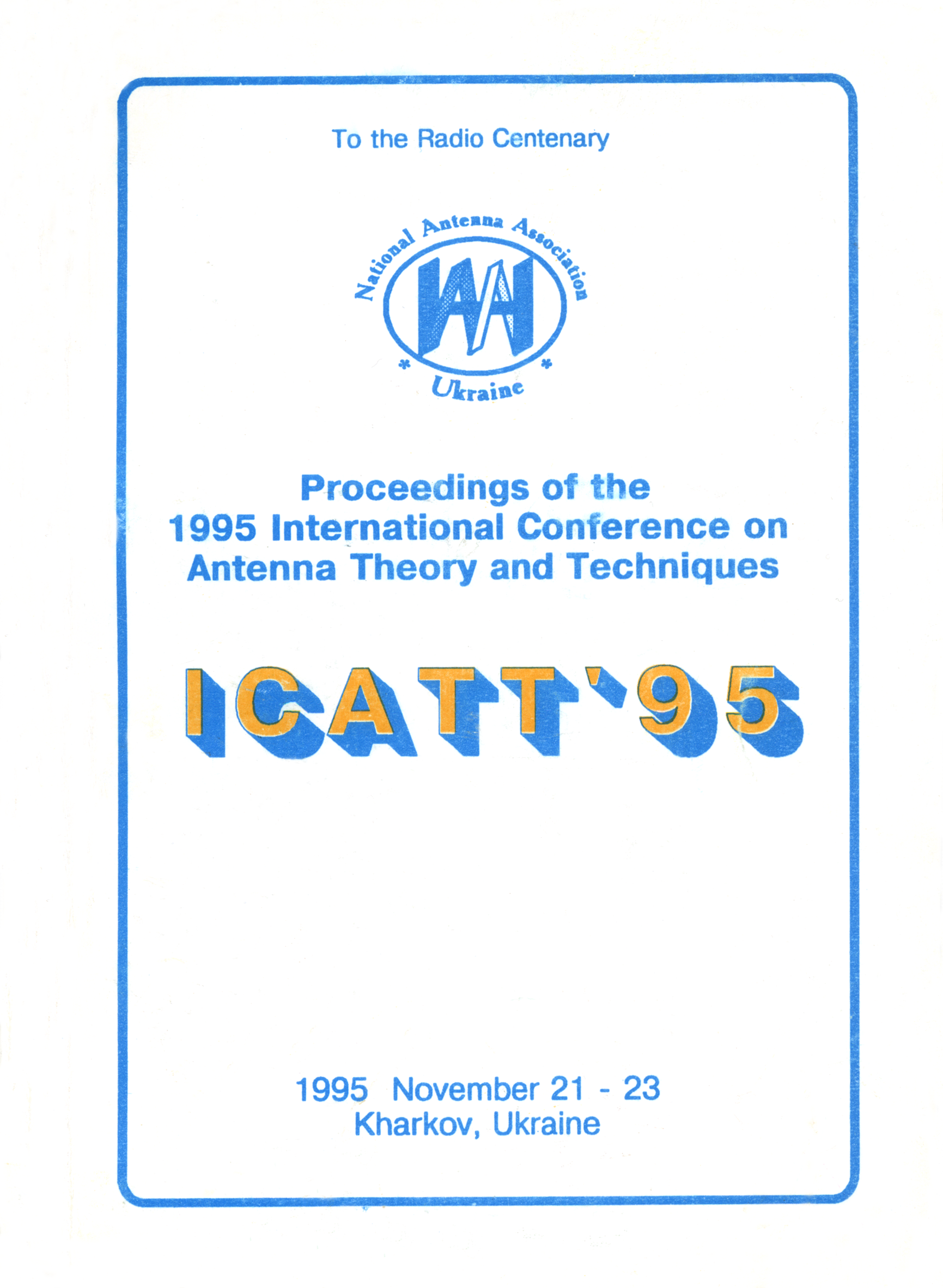Hybrid printed antenna
DOI:
https://doi.org/10.1109/ICATT.1995.1234131Abstract
High technological efficiency and low cost of microstrip antennas are certainly their advantages. Increased losses as compared with waveguide-slot antennas may be referred to as disadvantages.
A construction of a hybrid antenna with low losses has been developed in which the basic transmission line is a planar dielectric waveguide of a high-quality dielectric with a diffraction grating used as a radiating structure. The latter is made by the printed technology on the substrate of conventional fiber-glass laminate metallized from both sides. Antenna operation is based on transformation of a slow surface-wave mode of the dielectric waveguide into a space wave as a result of diffraction on the periodic structure.
An antenna with an output aperture 100x1000 mm2 was made and experimentally investigated. The planar dielectric waveguide was excited by the H-plane horn-lens transition from a hollow-type waveguide. The planar dielectric waveguide with 100 mm width was made of teflon, and had the losses of not more than 1 dB/m on the main E-wave at the 8 mm wavelength. From an electromagnetic point of view the diffraction grating is formed by periodically placed strips on the surface of the dielectric layer, the thickness of which is about a quarter of the wavelength in the medium; a lower surface is metallized to prevent the two-side.
The grating is placed at the distance of about a half of wavelength from the planar dielectric waveguide with a small tilt to form a required amplitude distribution on the aperture in the direction of the surface wave propagation. Since the scattering of a surface wave of the dielectric waveguide at every element of the grating has a single-interaction character, the energy losses in the layer of fiber-glass laminate appear to be small. Total losses in the antenna do not exceed 1.5 dB. The beam of the radiation pattern is measured as 5.5x0.45°, and the levels of side lobes are -23 dB and -17 dB, respectively.

